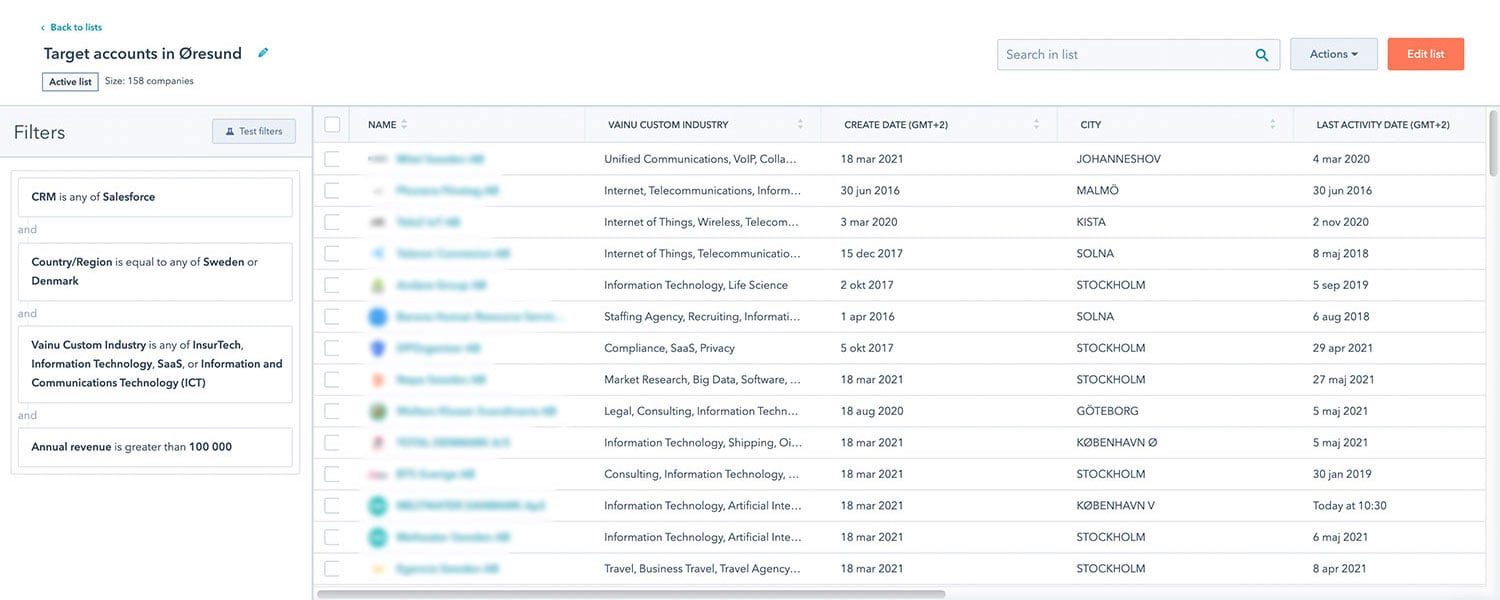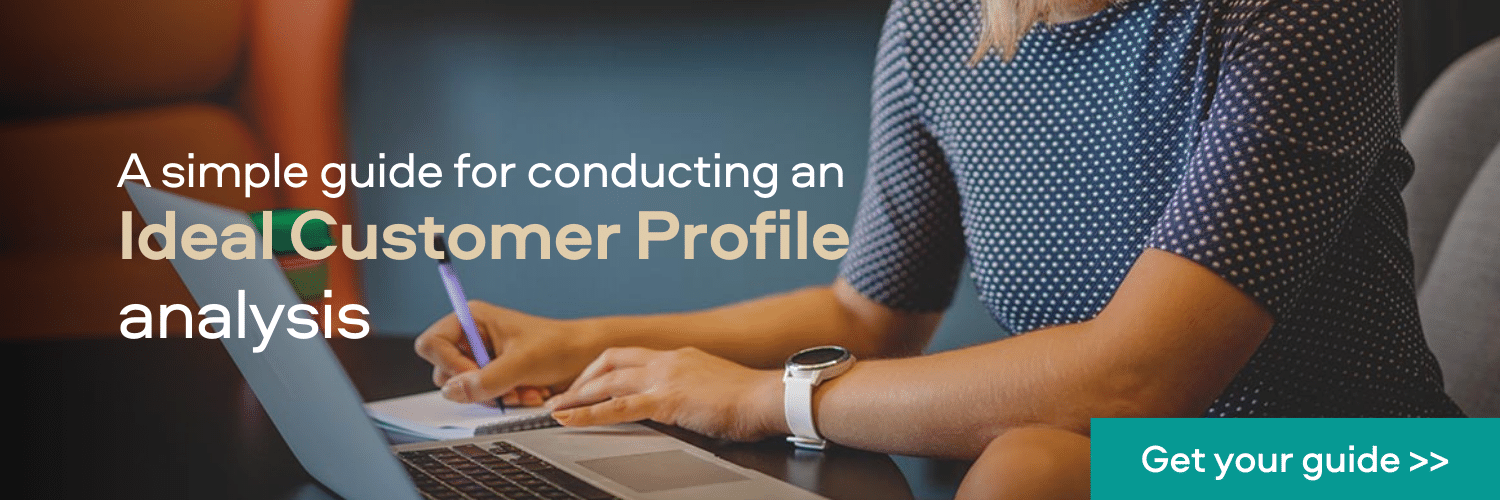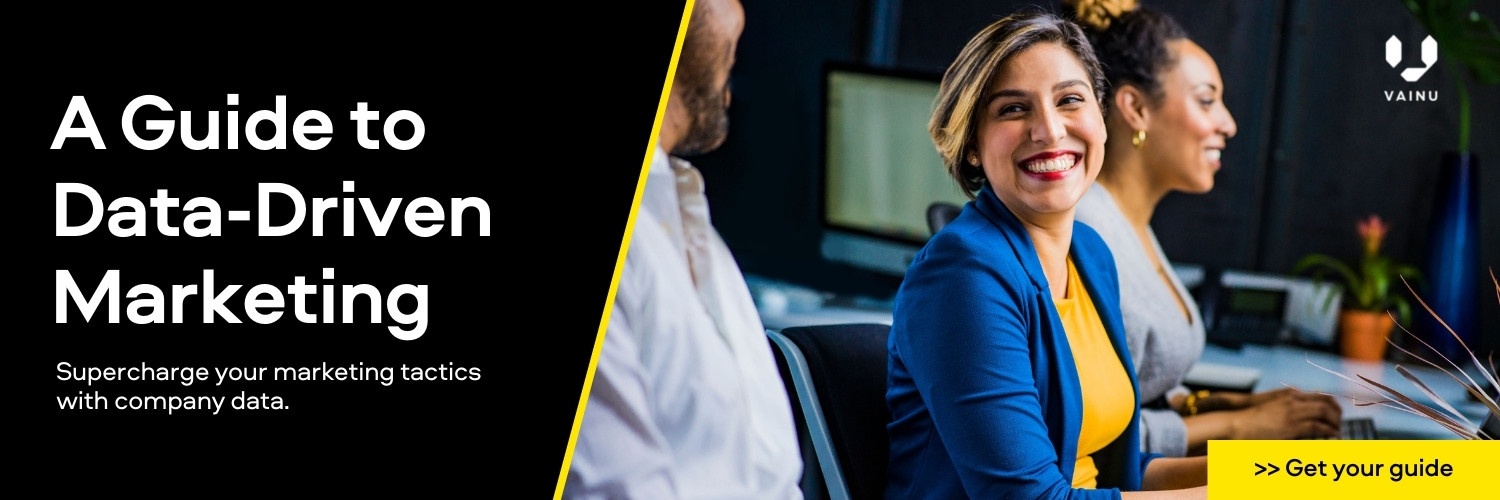Segmentation for B2B Companies: A Step-by-Step Guide
"When you speak to everyone, you speak to no one". The rationale behind this statement is relatively easy to grasp—if you don’t personalize your messaging, people won’t feel that what you’re communicating is relevant to them and they, therefore, won’t be inclined to listen.
That’s probably something most of us can relate to on a personal level, but a problem for businesses is that personalization to the individual level is difficult to scale.
So, how can you ensure that the potential customers, who are exposed to your marketing communication, feel that your message is actually relevant to them? Through effective segmentation.
What is B2B market segmentation?
In short, segmentation refers to the division of a population into smaller independent sub-populations, or segments, based on some shared characteristics.
For the B2B market, segmentation divides companies into homogeneous groups that are similar to each other and share certain common characteristics. The rationale being, if companies have commonalities in their characteristics, then they might have commonalities in their needs.
Segmentation allows you to concentrate your limited resources on appealing to the potential customers who are most likely to buy your product or service—these are often the companies you'll be looking for when segmenting the B2B market.
In this way, segmentation allows for marketing campaigns that are specifically suited and personalized to address the segment's unique circumstances and needs. These companies would then be more likely to react to the campaign because it is relevant to them and to interact with your organization. Simple enough, right?
Segmentation allows you to concentrate your limited resources on appealing to the potential customers who are most likely to buy your product or service.
How to achieve personalization at scale with meaningful B2B segments?
Unfortunately, just because something is simple doesn’t mean it is easy! There are many obstacles that could cause you to stumble on the road to completing a meaningful B2B market segmentation.
Phase one: Know your customers
Your first (and most important) segment should be your customers. A good starting point is to sit down and analyze your current customers—they are the ones who have actually bought from you before after all.
You want to define what it is and who it is you’re looking for. It doesn’t make sense to segment the market if you don’t know which companies you’re looking for and what characteristics you should be segmenting based on.
Ask yourself the following questions:
- Why did they become our customers?
- What problems did we solve for them?
- Did they have similar problems or pain points?
- Do they have similar business characteristics?
- Were they a small local start-up, or were they a large international company?
- Do they work with a specific type of product or service?
And so on.
The important thing is that you get to know your current customers so you know which characteristics you should be looking out for when conducting a B2B market segmentation. Here at Vainu, we always recommend that our customers spend some time creating their ideal customer profile (ICP) so that they know precisely which characteristics are essential to them.
Phase two: Create B2B segments based on company characteristics
If your ideal customer profile describes the most important attributes of your most valuable customers, then you want to find companies that match those characteristics. Again, the rationale is simple: if SaaS companies in the Nordics bring in the most business, your target segments will be, well, SaaS companies in the Nordics.
Those basic attributes (“SaaS” and “Nordics”) will already help you personalize your message. You can address the typical challenges SaaS companies face, like growth and churn, and you can consider translating your message into Swedish, Finnish, and other Nordic languages.
The most popular way to conduct B2B market segmentation is based on firmographic data. But that's not the only way to segment! Let’s briefly see the different types of company data you can use to segment your market and personalize your outreach.
The problem of using just firmographic data for B2B segmentation is these characteristics don’t allow much granularity.
Firmographic data
In short, firmographic data refers to descriptive information about a company. Just as demographic data (gender, age, income, etc.) can be used to classify and group people, firmographic data can be used to organize and group companies based on specific common characteristics, such as company size, location, and industry.
Firmographic data is relatively easy to collect—a lot of the information can often be found on governmental company registers! And, certainly, there’s no shortage of resources offering lists of companies in Europe for B2B sales.
The problem with using just firmographic data for B2B segmentation is these characteristics don’t allow much granularity. Just because a company operates with a SaaS model doesn't mean that they necessarily need a marketing automation tool, and just because a company has an annual turnover of more than five million USD doesn't mean that they necessarily need a complete HR solution.
Firmographic data alone will not always hit the spot and accurately tell you what a company’s needs are, but it will give you something to go by more often than not. To step your B2B personalization game up, you will need additional data sets.
Technographic data
Technographic data refers to information about a company's so-called tech stack and includes information about its social media, its digital footprint, and what technologies the company utilizes. For example, technographic data can tell you if a company has a CRM system implemented and, if they have, which specific system they use.
Technographic data is an excellent way to do B2B customer segmentation, especially if, for example, your organization offers a solution that is contingent on the company's use of modern technologies or certain technical systems.
It may be that your organization provides a digital marketing automation solution, which might mean that you are looking for companies that don’t already have that tool implemented into their tech stack.
By combining different data points, you can start creating more specialized and targeted B2B company segments. Examples of such B2B segments could include e.g.
Segment A
SaaS companies in Sweden that use HubSpot and have over five million euros of revenue.
Segment B
SaaS companies in Sweden that use Mailchimp and have over five million euros of revenue.
Segment C
SaaS companies in Sweden that use Mailchimp or HubSpot and have over five million euros of revenue.
As you can see, there are endless possibilities.
Side note: Because traditional industry codes such as “Offices of Other Holding Companies (551112)" are not always as useful as we might like, Vainu developed an AI model that uses the content of a company’s websites to form unique industries that better explain what it is that a company actually does. With over 700 custom industries, you’ll know exactly the type of company you’re reaching out to. Read more about Vainu Custom Industries here.
By integrating a company database and a business system, sales and marketing will be able to create new and diverse segments whenever they need to, whether that be when sales wants to find a new group of companies to contact, or marketing wants to create a list of companies to promote a new product offering to.
Phase three: Segmentation in your CRM or marketing automation tool
As you can probably guess, the efficacy of your B2B segmentation process will be heavily dependent on one thing—data. Without relevant data in the form of company information, it will be almost impossible for you to classify and distinguish between different companies on the attributes required to complete an effective B2B market segmentation.
Company information helps you create very specific segmentations (let’s call it “micro-segments”), which provides you with the necessary context to personalize your marketing and sales outreach. But if the possibilities are endless, how do you scale this process? The answer is to bring that indispensable data to your business systems.
Integrating a company database and sales and marketing systems will give salespeople and marketers access to company information in their everyday tools without having to fiddle around with different systems.
By integrating a company database and a business system, sales and marketing will be able to create new and diverse segments whenever they need to, whether that be when sales wants to find a new group of companies to contact or marketing wants to create a list of companies to promote a new product offering to.
Below you can see how Vainu’s data is integrated into HubSpot. There are several filters in play, such as which CRM the company uses, which country and which Vainu Custom Industries they operate in, and what their annual revenue is. This combination of characteristics works together to create a very specific list of companies that sales can contact, or marketing can create a tailored marketing campaign around.
One-to-one, one-to-few campaigns
Remember what we said: "When you speak to everyone, you speak to no one." Now that you have identified and segmented ideal accounts, you can easily and quickly implement hyper-targeted and personalized campaigns and do it at scale. Instead of speaking to many, you can launch one-to-one or one-to-few marketing strategies such as account-based marketing (ABM).
ABM recommends the concentration of a company's limited resources on the creation of individualized campaigns that are targeted toward the acquisition of a smaller group of high-value customers who share certain characteristics.
For example, it could be that your company has just developed an awesome new product. As per usual, it is the sales and marketing’s responsibility to get the product seen by the right people. The problem is that the new product isn’t really useful for all companies. In fact, the product is optimized for large SaaS companies in the Nordics that use Salesforce as their CRM.
As part of the marketing team, it is your responsibility to segment the market and create a list of companies that the product is relevant for, that you can market the new product to, and that your salespeople can reach out to, but how?
If you already have all the relevant data in your CRM or marketing automation system—in this example being Vainu Custom Industries, revenue, location, and CRM system—it's simple: just add the appropriate filters, then a new list of all the relevant companies and their contact details is formed.
This is a small part of the rationale behind account-based marketing. If you want to learn more, our account-based marketing ebook gives you all the information you might need to know about ABM, such as how to best implement it in your business and what tools are on the market. You can download the ebook here.
From raw data to meaningful information
If you are going to go look for a company database, it is important that you establish two things: Does it have data relevant to your markets, and does it include the type of information that you actually need? Generally, company databases do all of the hard leg work for you and gather all the information that could potentially be useful to you when it comes to creating detailed and meaningful B2B segmentation. This means you can spend your time on more value-adding activities, such as creating effective marketing campaigns.
If all you need now is data, you should consider trying Vainu for free today and start finding your best potential customers right away—just fill out the form on this page.

